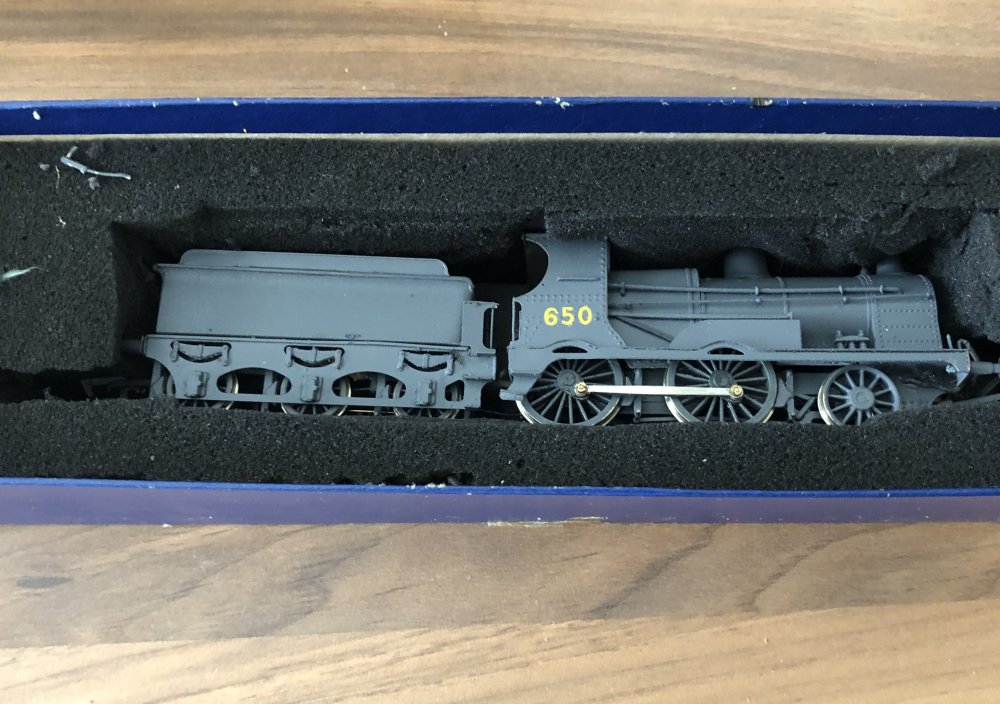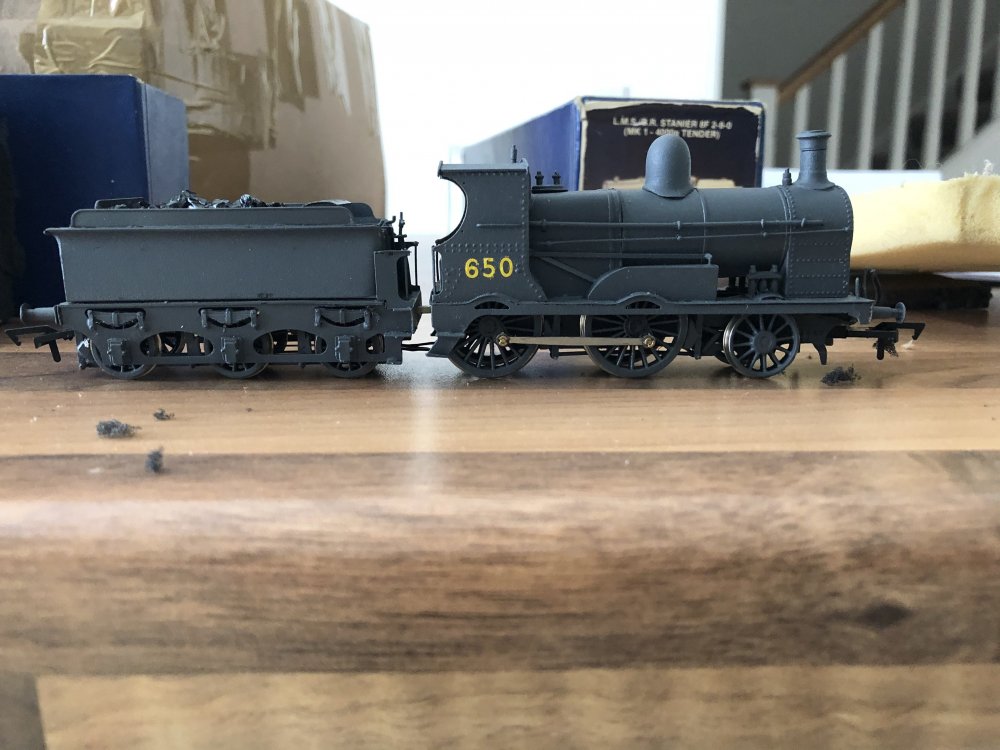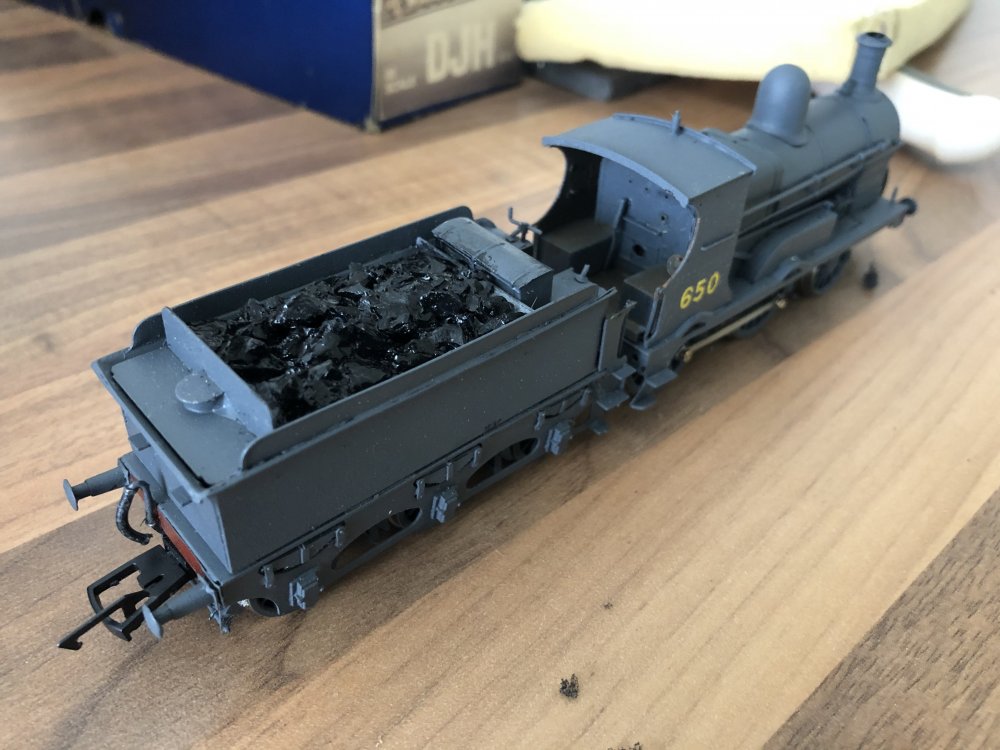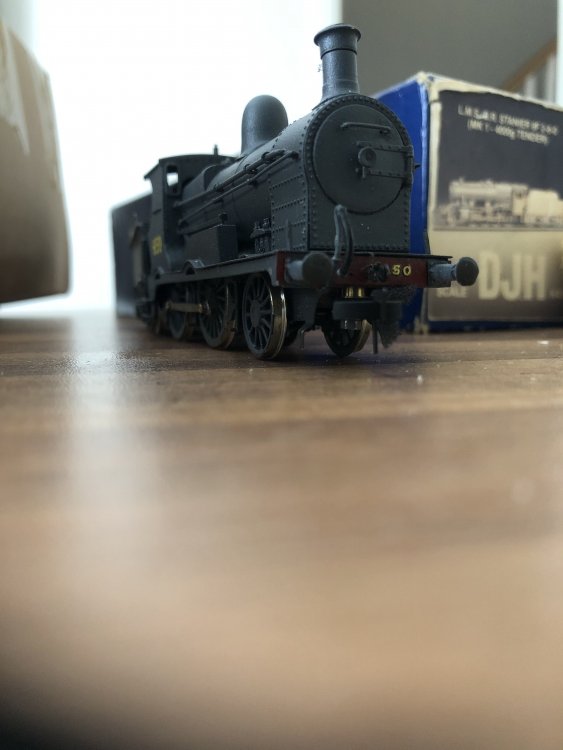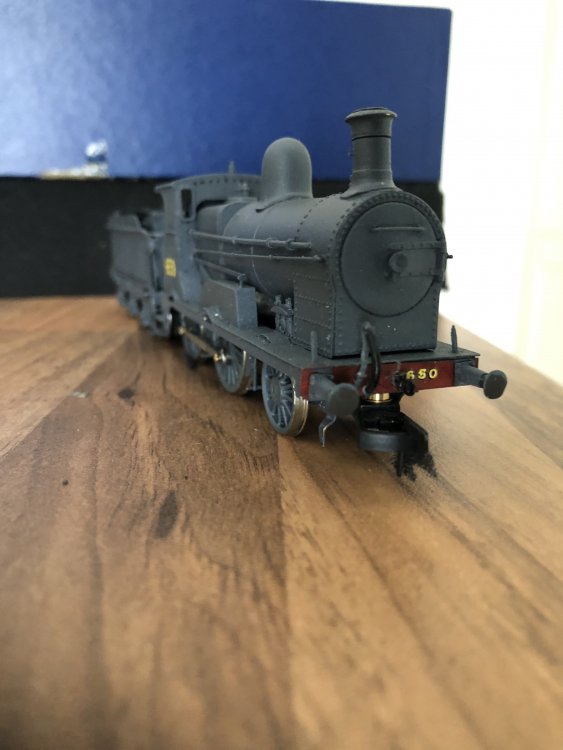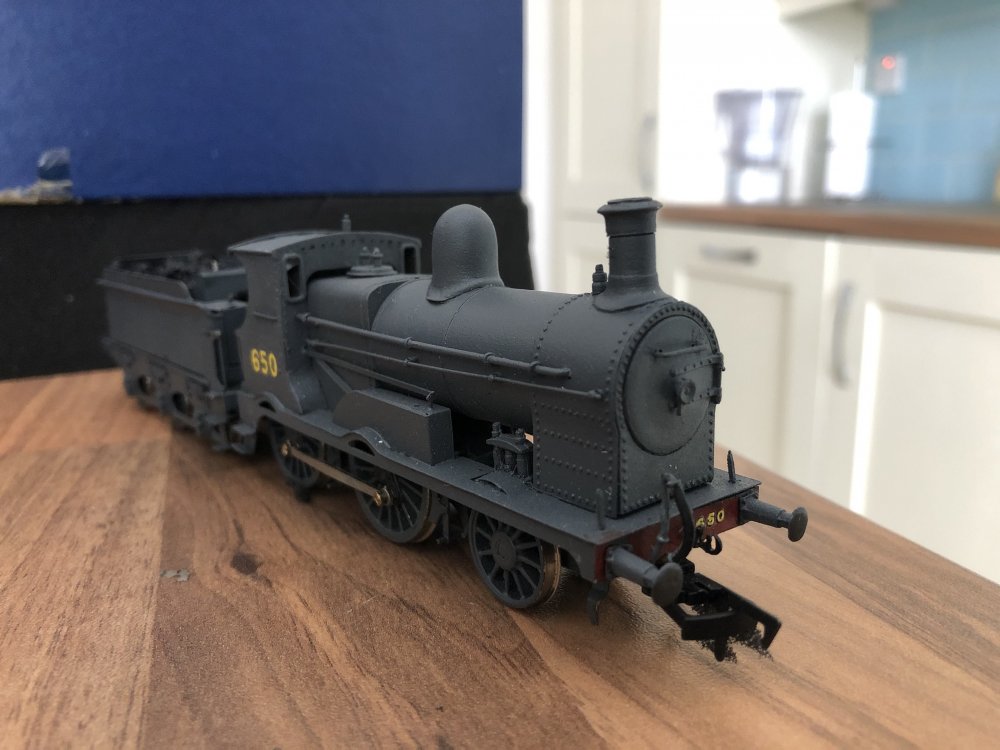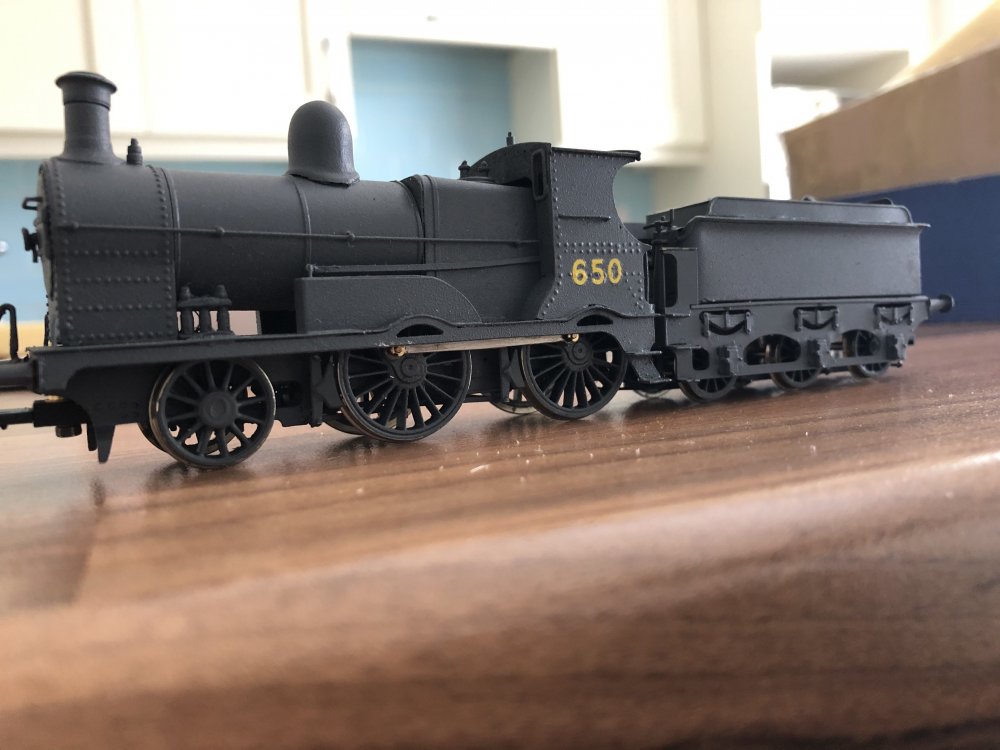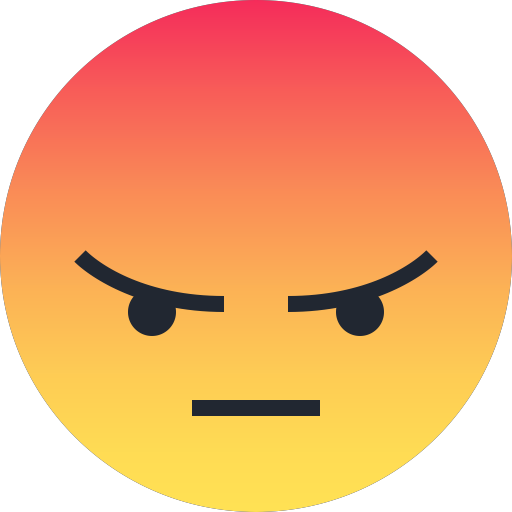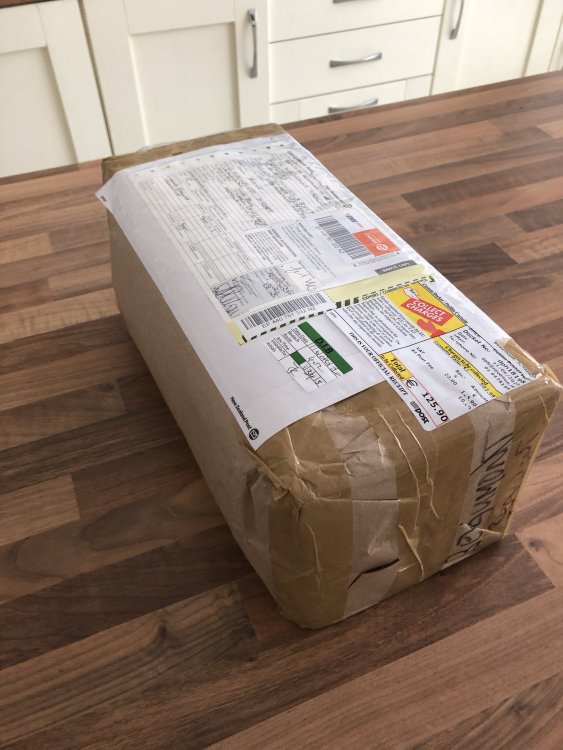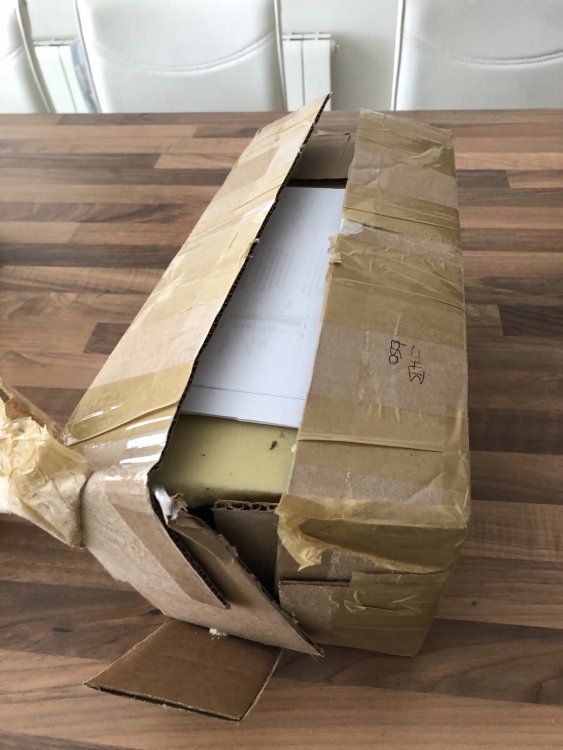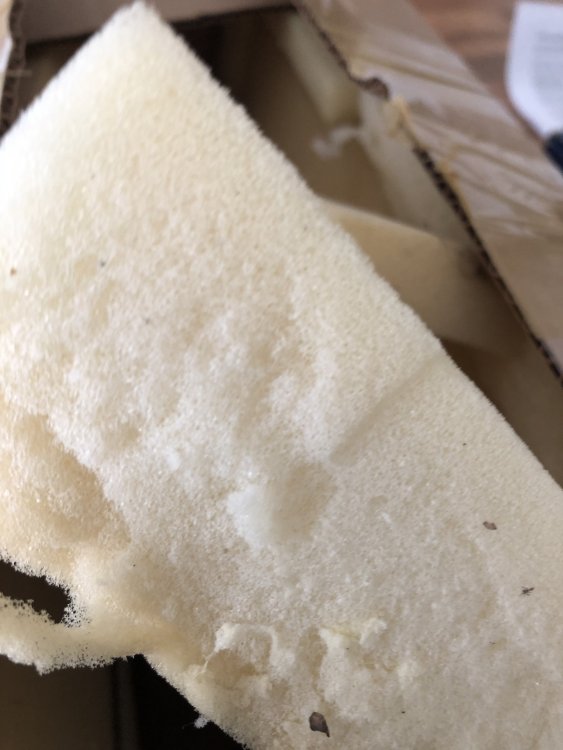-
Posts
15,873 -
Joined
-
Last visited
-
Days Won
393
Content Type
Profiles
Forums
Events
Gallery
Everything posted by jhb171achill
-
- 16 replies
-
- 14
-

-

-
-
And in the box there was another box. But - I had to pay €126 in customs charges from Noo Zealand!
-
-
Got ya, yes. My reasoning was based on 071 onwards being logically the next in the “A” series.
-
The original “A”s would have become the A001 class, with the new arrivals as the A071 class, same as you’d B101, B113, B121, B141 and B181 class.
-
RAL numbers for authentic railway liveries
jhb171achill replied to jhb171achill's topic in General Chat
I think we're onto a winner there. Flying snail wallpaper, folks, roll up! €450 a roll, or two for €1500! No, indeed!!!! Fry's shade isn't right! He has two engines painted in it, but I think the paint has perished. I got the correct one with the assistance of John Mayne (Mayner) and Roderick Bruce (00 Works)! I think I actually pinged it up on IRM some time ago but I can't find it now, and someone's just texted me looking for it!!!! The 14th Law of Sod! -
RAL numbers for authentic railway liveries
jhb171achill replied to jhb171achill's topic in General Chat
Now all you need is "flying snail" wallpaper! (There's tonight's nightmare fodder....especially for the missus!) -
RAL numbers for authentic railway liveries
jhb171achill replied to jhb171achill's topic in General Chat
Is it??? OK! That solves a mystery for me! So, a quiz question for a connection between CIE and Egypt! -
RAL numbers for authentic railway liveries
jhb171achill replied to jhb171achill's topic in General Chat
Yes, but it says "nil" rather than "Nile" - though I get your point! It translates as "water of nothing", which I always found odd! I would simply call it "pale green"........... Sounds about right, Flange; I was not able to test these as Fry had nothing that late (he died in 1972), although we took a look at one of the Malahide Castle outline Mk 2/3s which looked right for that. Garfield took a note of that one. -
RAL numbers for authentic railway liveries
jhb171achill replied to jhb171achill's topic in General Chat
B113 in Cultra is painted in a reasonable approximation of the post-1955 diesel loco and coach livery, whereas "Maedb" is standard CIE green. B113 was the darker shade as on Maedb when new, but would have been repainted in the livery she now carries between c.1956 and 1963, after which she became black and tan, then black with yellow ends. Maedb's original colour may well appear in pin-top-sized bits in obscure nooks and crannies, but she is likely to have been sanded down to undercoat before repainting in CIE green. Then she was repainted by CIE again before heading north to repose in state in Cultra. -
We had a photo shoot there today for the new brochure. Any brochure for any visitor attraction has to have a few obligatory children in it! Thus, myself, "Baseboard" Dave, and some of the staff and their friends of Shannon Heritage and Fingal Council all got together, having "rounded up" a "rent-a-mob" of people to comprise "members of the public" viewing certain scenes. My friend and colleague Tricia had her two daughters to appear in some of the pics. One of these young ladies, aged 12, said "I can almost see fish in that sea"! (Dave, you need to come back and install moving fish.....)
-
Folks Today, IRM made a State Visit to Malahide so that between us we might use IRM's latest high-end paint-matching swatches to record as accurately as we could several of the liveries of models, and painted backgrounds to railway coats-of-arms, which we know to be authentic. Many of Cyril Fry's models were painted during the 1940s, when many paint colours were not available, or were of inferior composition. When one considers that his EARLIEST models on display were painted some 75 years ago, this in itself raises issues. Firstly, no railway vehicle in real life carries the same paint for 75 years, thus the degree of chemical aging in the paint on models is non-prototypical; and also, the models were not "weathered" outdoors. Thus, some colours were actually impossible to match ACCURATELY, though the results of our deliberations can produce colours which will "do rightly" for some liveries. Of those that were possible to accurately record, including the all-important CIE green and "eau-de-nil", the results are as follows. CIE 1962-72 (original) "tan" (officially "golden brown", though far too orangey to be realistically described as brown): 060 50 70 "Supertrain" later orange / tan: RAL 2011 CIE Standard Green: 140 50 60 / 150 30 30 (As applied to all buses, road lorries, some station and signal cabin paintwork (along with cream), any steam engines painted green, and passenger coaches UP TO 1955, but not afterwards; plus A46 for a few years in between its silver and black eras). Both colour reference numbers match in slightly different light. They're as good as a match. RAL 6037 appears to be the same too. CIE light green for lining, numerals and "flying snails", known somewhat inexplicably as "eau-de-nil" ("water of nothing?? Whaaaat??): 130 70 40 when new, but weatherd to 140 70 30. Use the latter on a model which is meant to look a bit weatherbeaten. Dublin & Blessington Tramway green, as used on locos, tramcars and the two railbuses: 140 30 30. GSR carriage maroon: At the outset, the GSR used up what MGWR maroon and GSWR very dark lake that they had, with GSR markings of course, on everything. Thus, very dark shades of maroon replaced the more LMS-shade Cavan & Leitrim and DSER maroons, the greens of the Wisht Clare and the CBSCR, and other stuff. After a few years, they had their brown and cream main line livery, so by 1928-30, you've an absolute patchwork quilt, main lines included! In 1933 they adopted what has been described as "indistinguishable" or "almost indistinguishable" from LMS (England or NCC) maroon. Today we tested both and found them identical. The lining was exactly the same too! Thus, anyone wanting model GSR times - prior to the "grey'n'green" era, we now go back to the "grey'n'maroon" era; just get LMS paint from your local LMS-specialist paint shop, or keyboard'n'website! Have a look at 020 20 29. The GSR had a unique green, used only on the three 800 class. Luckily for us, Cyril Fry painted three locomotives with the exact paint. Curiously, none of his trio are 800s - they are all locos which would never have been anything but plain grey. AND - his OWN 800 is in CIE green, not GSR! I understand that one of his trio in GSR green was made by him for his buddy in Belfast, Drew Donaldson, but Fry ended up keeping them. This colour proved impossible to match absolutely exactly, but the closest is 160 40 30. The three 800 class had name and numberplates backed with blue. 800 retained that into CIE days until the end, and still has it at Cultra. 801 and 802 had their number and nameplate backgrounds repainted red between 1952 and 1955. The closest match to the blue is 250 30 20 or 230 20 25. While referring to GSR green and Drew, I had heard that he had insisted that Maedb in Cultra is in GSR green; it isn't - it's in CIE lined green. The "G S" on its sides are Cultra additions - in the livery it carries, it should have a "flying snail". Actually, "Maedb" is the best example extant today of actual CIE green. GSWR "dark lake" may be accurately seen today on the preserved coach 836 at Downpatrick. It's on many of Fry's models. It is a bit like the colour of Guinness - it looks a dark brown, almost black - but in fact is an exceptionally deep red; RAL 8019. Donegal red is closest to 030 30 45, or RAL 3001. While in Northern lands, the BCDR painted its locos a very dark green (not the Isle of Man green carried by No. 30 in Cultra). This was closest to 140 20 20. GNR railcar / bus / Fintona tram / Howth tram dark blue: RAL 5013. This is not, of course, the same as steam loco blue, which was much lighter. Both of Fry's GNR locos are the wrong shade - one too bright, one way too dark (probably as a result of wartime paint), so we could not test them, but the RPSI's 171 and 85 are spot on. The GNR's unique 0.8.0 diesel loco was the dark railcar blue. The Clogher Valley used a darkish maroon: 020 30 30 is an exact match. One gem is the very dark green as now seen on Downpatrick's No. 90, and on one of Fry's earliest models. Despite being painted in 1934, it still looks right. This is the very dark olivey green used by the GSWR in the 1870-1895 period. A "turn-of-the-century" southern layout might have most GSWR locos in lined black, but one or two still in this: 110 20 10. A productive afternoon; thanks to the Genie of IRM Towers for his magic paint-matching machine.
-
It's an IRM example, MM. Yes, it looks stunning, and believe you me, when you see the REAL thing, you will realise that my pictures above don't come close to doing it justice! It is truly a masterpiece.
-
It's the Malahide Model Railway! Opening at the end of the month, hopefully. Scenery by "Baseboard" Dave, of this department.......
-
So, you've silver (1958-63); black (with or without yellow patch, and some livery variations like ONE with a yellow buffer beam, and one with an orange one); black with high tan band, black with low tan band (AFTER re-engining), and finally "supertrain". None lived long enough to get the "tippex" white lines, although I fancy that it would have looked well. And of course, the five that got NIR blue (one of NIR's was never repainted), and the sole one that only on 1st April had Donegal red............. Yes, and also line-ups of all sorts of old wooden-framed stuff. The last run I had in a set like this was a loco-hauled local from Dundalk en route to the RPSI May Tour - I think it was May 1986, but it might have been '85. A 201 (or "C" as it will always be to me!) had four or five old laminates behind it plus a BR van. No two were alike, and one was particularly shabby.
-
I thought I'd take a shpin this morning in my time machine, and I ended up at Bray Head in 1955 (got a train out from Harcourt St). I was hoping to see a DSER tank engine on a local, but I hear this strange rumbling sound, and this thing comes into view. I think it's one of the new diesels. Can't see them catching on, though.
- 151 replies
-
- 16
-

-

-
mgwr preserved railway Connemara Railway project.
jhb171achill replied to ttc0169's topic in What's happening on the network?
It won't be "Maedb", anyway......... -
mgwr preserved railway Connemara Railway project.
jhb171achill replied to ttc0169's topic in What's happening on the network?
As the late, great Baldrick might have said "there's a cunning plan!" -
There ye go! So, you've a genuine black prototype. Does it have a "snail"? Tenders got swopped..... If it is black in 1961, it could even have had it several years - 2 or 3 anyway. That one remained until the end of steam in February / March '63, when it would have been formally withdrawn. It will certainly not have been painted after 1961, so it will have had perhaps five or six years in black, in traffic. Excellent find!
-
Absolutely beautiful model - very well done as always! In terms of colour, what you've put on the smokebox does look about right. I had a look in my records to see if there's any mention of a J19 gaining the black in the last few years - as you know, SOME CIE engines did. It seems that ONE J18 was repainted black very late on. I don't know yet which one, but it had just the pale yellow number on the cabside - I don't think it had a "snail" on the tender (or anything!). But I haven't found any J19. I will delve and see if I can find one in actual black. One of the last steam engines painted, in Cork in 1962, was a J15 which had the normal grey, but uniquely with a black smokebox. Not a good choice for a widespread livery, as it did that winter's beet, and was withdrawn nine months after being painted!
-
mgwr preserved railway Connemara Railway project.
jhb171achill replied to ttc0169's topic in What's happening on the network?
Exactly. And wait until you see what it is! -
Might as well add, I will be meeting IRM at Malahide tomorrow with a matching gubbins which highly accurately matches liveries. The purpose will be to assess CIE green (for one of the IRM "A"s). Of Fry's other models, many have absolutely authentic paint colours and these will be assessed too. Among them is the rare GSR green, which was only ever applied to the trio of 800s, as well as coach livery colours for CIE, GSWR, MGWR (the short-lived blue and white, and the post-1918 maroon, but not the brown used on the vast, vast majority of their stock), NCC maroon, Cavan & Leitrim, Clogher Valley, Donegal, Lough Swilly loco green, BCDR loco green, and a good few others. I will post details in due course. In the fullness of time, once the lockdown is over fully, and B & Bs and pubs are open, I will arrange for further authentic colours to be assessed in Downpatrick and Enniskillen.
-
mgwr preserved railway Connemara Railway project.
jhb171achill replied to ttc0169's topic in What's happening on the network?
Wow!!! Superb!!
.png.c363cdf5c3fb7955cd92a55eb6dbbae0.png)

